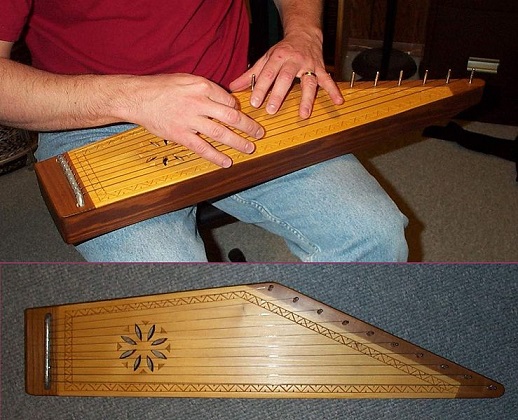
El kankles is a stringed musical instrument of origin lithuanian of the zither family. The instrument is similar in construction and origin to the Latvian kokle, the Russian gusli, and the Finnish kannel.
The body of the Kankles is constructed from a single trapezoidal piece of hardwood, hollowed out to make a cavity. A thin sheet of coniferous wood (generally spruce) is used to make a soundboard, which covers the body.
The sound holes, which traditionally take the shape of a stylized flower or a star, are cut into the soundboard, allowing the sound to be projected outward.
A metal bar is attached to the narrower side of the body, to which wire ropes or intestine are anchored. The opposite ends of the chains are attached to a row of matching pins inserted into the holes on the opposite side of the body.
Regional types
In Lithuania, there are three regional basic types of Kankles, although there are variations within each type and some overlapping areas. Each type has its own playing technique.
Aukstaitija
The simplest and oldest form, most often having five chains, and having a rounded bottom like a ship.
Žemaitija
Somewhat larger than the Aukštaitija, it usually has between eight and twelve strings. They have a flat bottom, and in some cases the shorter end is carved with the stylized figure of a bird or fish tail.
Suvalkija
Usually the most highly decorated type used in concert are often based on this variety. The most prominent feature is the identification of the addition of a spiral figure carved to the point of the body of the instrument and sometimes the rounding of the narrowest part of the body. These instruments generally have between nine and thirteen strings.